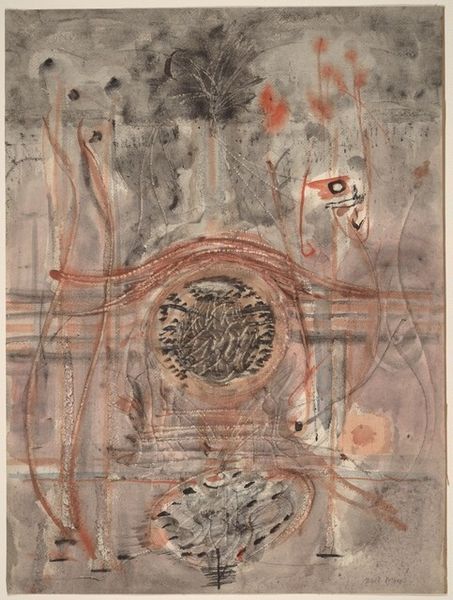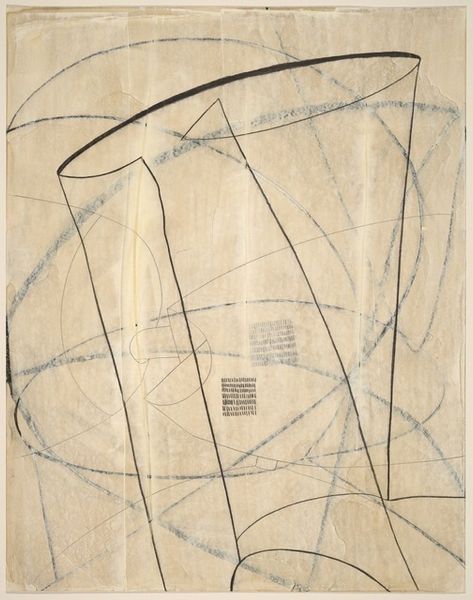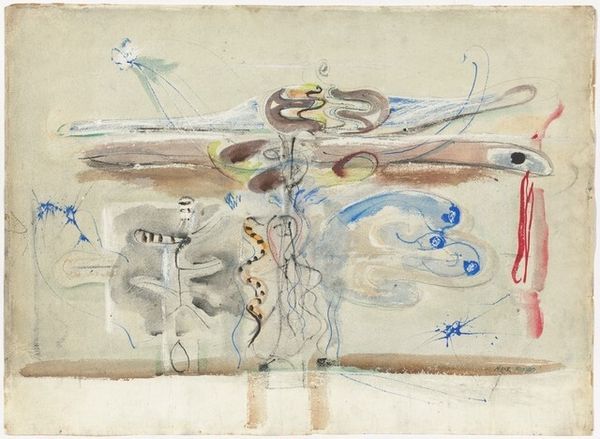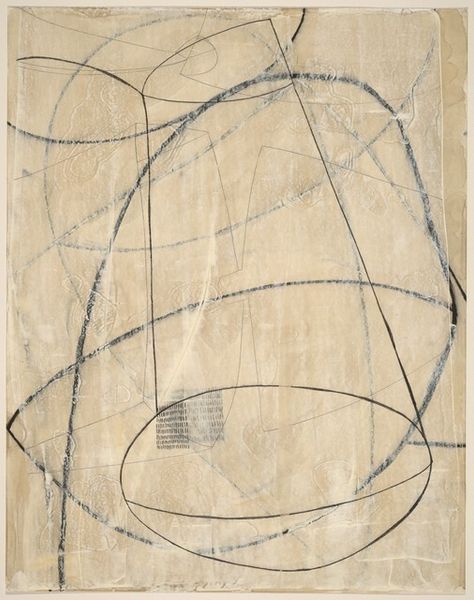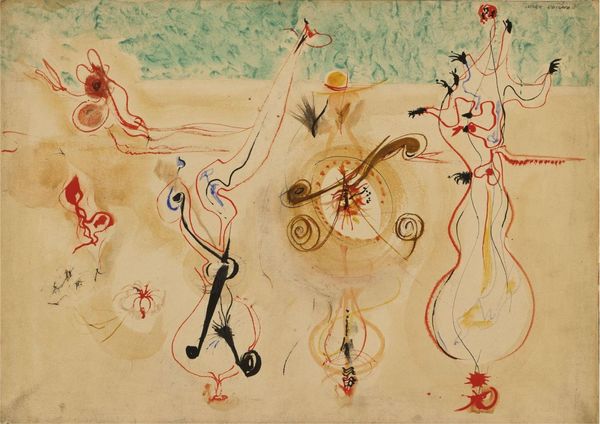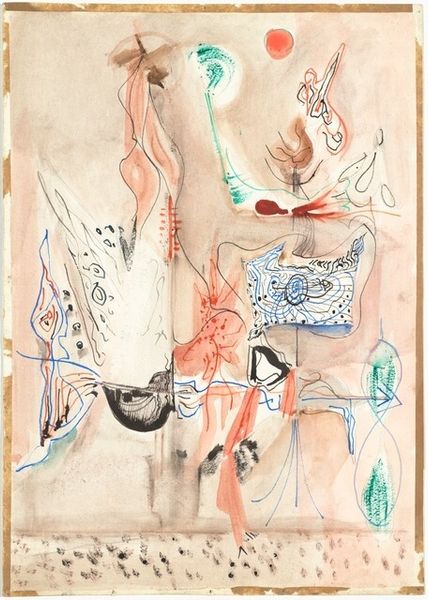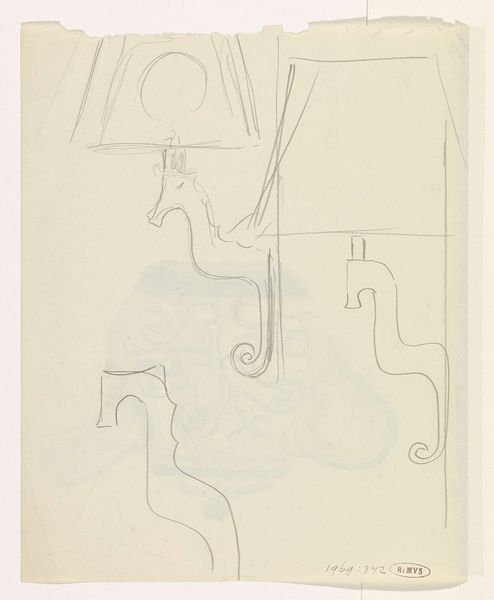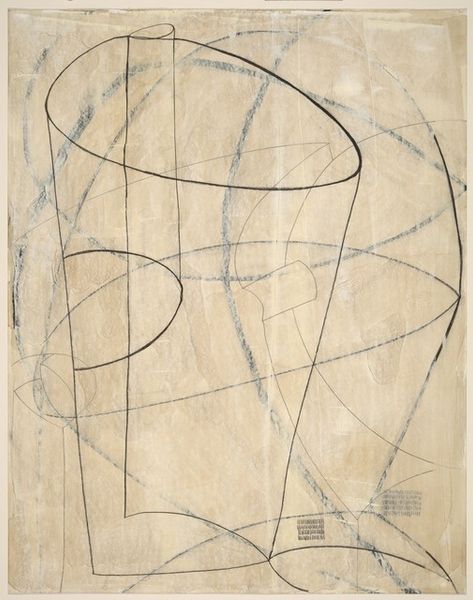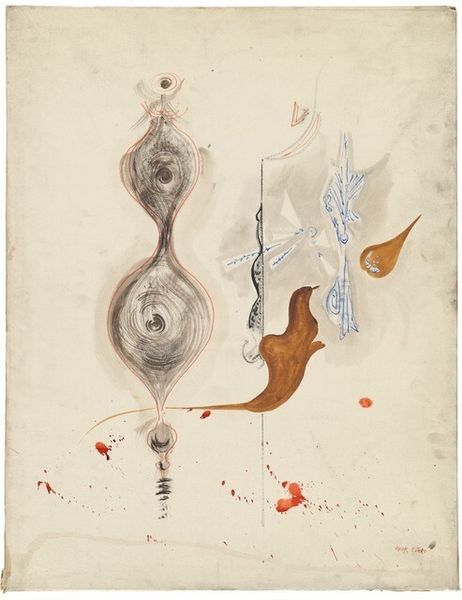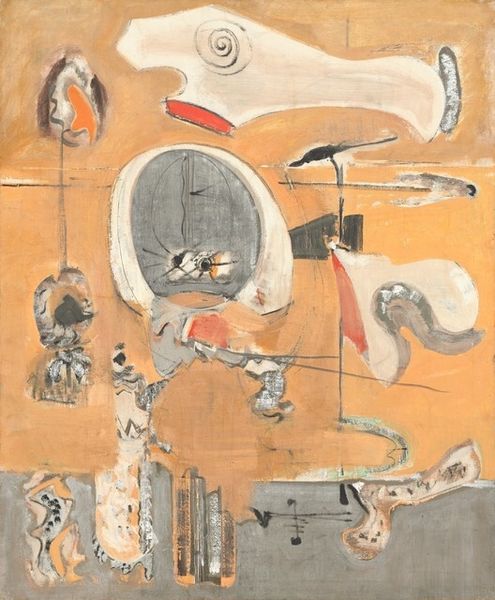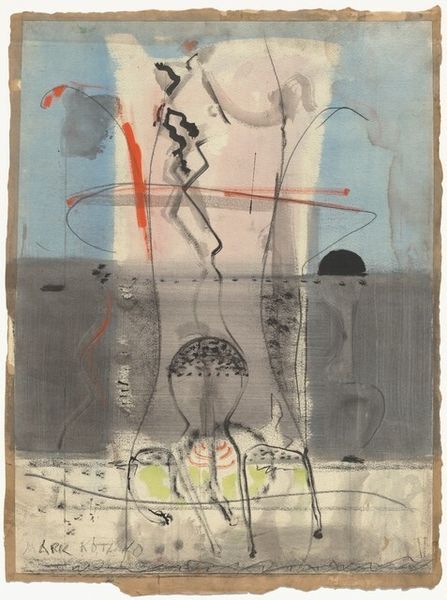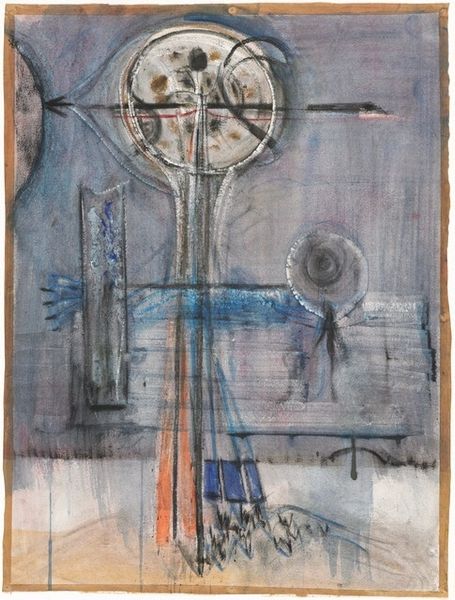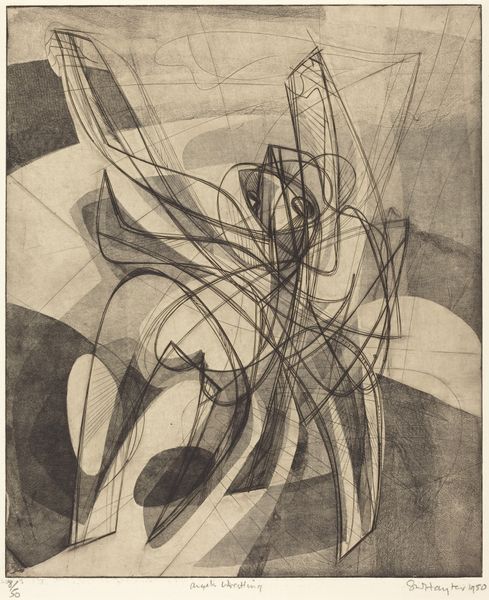
drawing, paper, watercolor, pencil, graphite
#
abstract-expressionism
#
drawing
#
paper
#
form
#
watercolor
#
geometric
#
pencil
#
abstraction
#
line
#
graphite
#
modernism
#
watercolor
Dimensions: overall: 53.3 x 37.9 cm (21 x 14 15/16 in.)
Copyright: National Gallery of Art: CC0 1.0
Editor: We're looking at Mark Rothko's "Abstraction," created around 1944, using watercolor, pencil, and graphite on paper. It feels almost like a blueprint or an ethereal creature, with delicate lines forming abstract shapes. How do you interpret this work in its historical moment? Curator: The key to understanding a piece like this lies in its context. In the 1940s, abstract expressionism was emerging from a world steeped in war and existential uncertainty. Rothko and his peers sought new visual languages to express interior states of being when traditional forms felt inadequate. What do you make of these seemingly biomorphic forms? Editor: They feel like they could be figures or organisms, simplified down to their essence, but the shapes don't resolve into anything recognizable. Curator: Precisely. Post-war, many artists questioned the possibility of objective representation. Abstraction offered a way to tap into universal, subjective experience, bypassing the failures of political and social ideologies. Notice how Rothko layers his media; what effect does that create, in your opinion? Editor: It softens the lines, creating a sense of depth and ambiguity, rather than something rigid and defined. It also invites contemplation of the creative process itself. Curator: Absolutely. The artwork, displayed in public spaces such as galleries or museums, further challenges the conventions of art institutions and how these are shaped and interpreted across various socio-political contexts. This abstraction speaks to a public desire for introspection, in a time defined by collective trauma. Do you find this to be relevant today? Editor: Definitely, it makes me think about how contemporary artists continue to challenge norms and try to push beyond representation to address universal themes. Curator: It’s fascinating how artworks like this both reflect and shape their cultural landscapes. They can spark powerful emotional responses even now, as our world grapples with change. Editor: This conversation's really given me a lot to consider, about how abstraction relates to history.
Comments
No comments
Be the first to comment and join the conversation on the ultimate creative platform.
